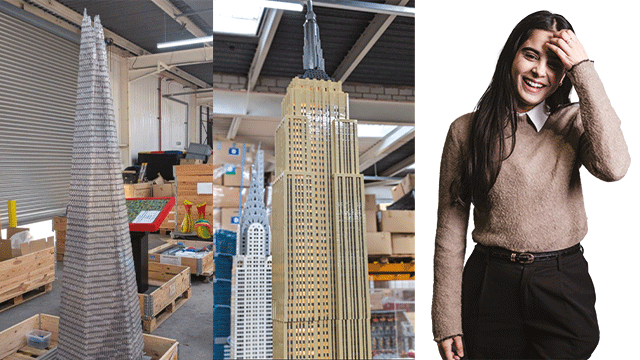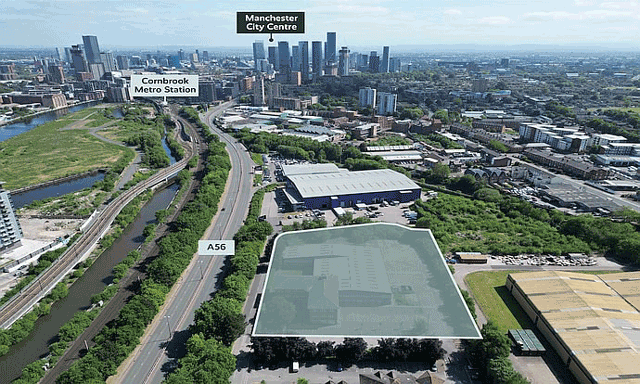Topics on the table for discussion in this spring’s Industrial Talks centred on investment, including a look at the state of the market, who and what is driving it, and whether Brexit would have any affect
The panel
James Williams, director, Savills industrial investment
Hugh Chivers, vice-president, BlackRock
Phil Sutton, development director, Kier Property
Jonathan Holland, senior fund manager, Legal & General Property
Alex Verbeek, senior vice-president and managing director UK, IDI Gazeley, Brookfield Logistics Properties
Mike Green, senior director and head of UK industrial, Aviva Investors
State of the market
James Williams: Investment volumes for industrial last year were £5.6bn. That is 20% down on the £7bn recorded in 2014, but is still a long way above the 15-year average of £3.8bn. On the returns perspective, last year delivered a total return for industrial of 17.3%. Again, that is about 30% down on the 24% that was returned in 2014 but, again, a long way above the 15-year average. Are we coming over the brow of the hill in terms of this cycle?
Jonathan Holland: First, has pricing reached a peak? Are we going to get further yield movement? We don’t expect there to be any further yield appreciation unless interest rates move downwards, which they might. There is certainly more downward pressure than there was. But I think returns over the next five years are very much about rental growth and that will be the main driver of capital returns. Distributions are forecast to have circa 2% rental growth over the next five years.
That is going to give a fairly healthy return of between 7% and 8% per annum which, in comparison with most other property classes or most other competing asset classes, is a still pretty attractive return.
Alex Verbeek: What is interesting about the course of the next 12 to 18 months is that there will be a whole new wave, potentially, of stock being traded, because essentially what has happened for the past 10-12 years is that exactly the same quantum of stock has just been recycled and has circulated around because of the absence of development.
There is grade-A stock in there, obviously, but it is the same stock. It is only during the past couple years within a wave of spec development that any new stock has actually come onto the market. So, grade-A stock in the UK has been, depending on whose research you look at, something like 220m sq ft. That is now on the rise for the first time in a decade.
Who and what is going to drive the market?
Hugh Chivers: Tritax Big Box has been quite acquisitive over the past year in the big-box sector but everyone feels this is a kind of income phase of the investment market. Who are the buyers for rack-rented grade-A big sheds?
Alex Verbeek: There are, I would say, two things. First, it depends on the income profile, but if rack-rented and long income with some rental growth protection is in there then it is an annuity fund-type purchase – it might be an Aviva, it might be a Legal & General, it might be a Tritax, Standard Life, the large pension funds. But as for the rest of it, producing five- to 15-year income, most of that is spec product and has not been traded because most of the development in this phase so far, just as in the spec developing during the previous cycle, has been by the larger developers like us, IDI Gazeley, Prologis, Goodman, and they have retained those assets in the main.
Hugh Chivers: It is quite interesting that those institutional investors and the institutional multi-managers are in a position now where they have seen such yield compression over the past couple of years that their sector weightings, their allocations relative to bonds, equities and everything, their property weightings are much higher than perhaps they might otherwise be, especially in the context of falling equities. Have they reached a kind of maximum position? Are they going to have to start trading out to rebalance their multiple, multi-management positions?
Mike Green: The wider question is: who is going to be driving the market over the next five years? Who are going to be the people investing in the market? Are we going to get more foreign investors into the market? My gut reaction is we will. I think they will increase as a share of overall returns. I think institutional money will decrease, the reason you just mentioned there being one of them. Cash inflows into lots of the funds have decreased – they are still positive but there are balancing issues for some funds.
Speculative development
James Williams: Do we expect levels of spec development and spec funding to increase over the next few years? I think we are tracking 7.1m sq ft across 39 schemes to complete next year. Take-up last year was 23m sq ft. So, is the headroom there to accommodate more spec relative to take-up?
Jonathan Holland: There will be more spec. I don’t think there will be a marked increase.
James Williams: Because of land constraints?
Jonathan Holland: Well, first, there is more global uncertainty. Is that going to feed through to occupier requirements? That is a matter of debate. Obviously, online retail is going to continue growing and that is going to lead to more requirements, certainly closer to urban areas.
Hugh Chivers: From a developer’s point of view, the problem with spec development at the moment is just the crystal ball gazing of where the market is going to be in two, three or four years. Our view is that there is still a place for spec development, but there is just a hint of caution. People are appraising sites off residual values or generating residual values off rents that are a bit toppy and I think people are getting a little bit carried away, which is why you are seeing such growth in land values.
Leases and valuing
Hugh Chivers: We should move to valuing by volume, not square footage.
Alex Verbeek: I was thinking that in every other real estate class everybody has used cubic capacity – multi-family, retail, offices, department stores, supermarkets. Industrial logistics is the only one that hasn’t.
There are a few interesting cultural anomalies about the UK market and one is that I think that for sheds over 50,000 sq ft, something like 98% of it is in single occupancy. I don’t know what the number is in the rest of Europe, but buildings on the Continent are built in cells, partly as a consequence of fire regulations, meaning there are dividing walls. Most of it is multiple occupancy, but in the UK that is not the case.
If you want to attract a single occupier, there is that sort of benchmark. It is in that mid-box, 40,000-50,000 sq ft. Occupiers want their own front door, they want their own car parking space and they want their own yard space and they do not want to share it – but that happens everywhere else in the world. And what is ironic is that a lot of those international occupiers, particularly third-party logistics providers such as DHL or Kuehne + Nagel, will happily cohabit in warehouse space in France or Germany but they will not cohabit in the UK. Well, why not?
Jonathan Holland: Do you think some of it is lease structure and length of lease?
Alex Verbeek: It is partly lease structure but also the principles of our demise arrangements, so yards are not shared. We demise yard space. In the US, for example, you do not demise the yard space, they are common areas. That means that there is a deduction off your gross rents, your net operating income is going to be low because you have got a service charge to manage those common areas. But it delivers much more flexibility in terms of lease-up as opposed to here. And that is perhaps your point about big shed development, that you have got one shot at it. We would love to be able to lease spec space to three or four tenants; if one goes, you have two-thirds occupancy, as opposed to all or nothing.
Lack of land
Phil Sutton: There is no land now so, for me, as a relevant trader with a small trade-setting model and the bigger sort of mid-sized logistics box, it is a great opportunity at the moment. You have the likes of Amazon taking 18,000 sq ft – that is a change in tactic, they are getting smaller boxes. This demand is, as I see it, for small trade and slightly larger mid-boxes of 50,000 sq ft. That growth is really happening and that is driving the market. But my frustration is lack of land. You cannot get land in good locations.
Brexit
Mike Green: There is a bit of nervousness around Brexit, so the first six months of this year will be quite interesting to watch – assuming we have a referendum this year. But I think once that is out of the way cash volumes will increase. The UK is still seen as a relatively safe haven, certainly for a lot of Middle Eastern and Far Eastern money.
Phil Sutton: Certainly the UK wants this out of the way, if we get the right result, though – of Brexit.
Mike Green: There is always uncertainly in the lead-up to an event, so having a relatively short referendum period is pretty good news and you obviously can deal with consequences after that.
EG’s Industrial Talks is held in association with Savills and IDI Gazeley











